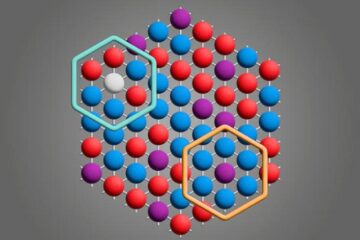In a Chilly Investment Climate, Canadian Universities Find Alternative Sources of Revenue

The survey also showed a 20 percent increase in industry support for university research, with companies committing $795 million towards innovative research projects.
The results were part of the annual AUTM Canadian Licensing Activity Survey: FY2010, which shares quantitative information about licensing activities at Canadian universities, hospitals and research institutions.
“Overall, the FY2010 data suggest that Canadian technology transfer offices continue to see the effects of the economic recession play out in a variety of ways,” says AUTM President Robin L. Rasor, CLP, RTTP. “The overall number of invention disclosures from respondents decreased by nearly 10 percent. Licenses executed – a key indicator of future financial return – declined by more than 27 percent. However, a modest 1.7 percent decrease in overall licensing income was more than offset by a surge of nearly 50 percent in 'other income' – suggestive of offices’ efforts, in a chilly investment climate, to find alternative sources of revenue,” adds Rasor.
“One positive metric in this year’s survey was industry funding for research, which increased substantially, by almost 20 percent, to $795 million,” says Barbara H. Eccles, LL.M.,RTTP, AUTM Vice President for Canada. “Given the lag between research funding and commercial return, it will be interesting to see if this uptick in funding contributes to an increase in technology transfer activities,” adds Eccles.
Highlights of the AUTM Canadian Licensing Activity Survey: FY2010 include:
• 33 new commercial products introduced
• 449 licenses executed
• 50 new companies formed
• 632 startup companies still operating as of the end of FY2010
• $6.1 billion total research expenditures
• 1,732 disclosures
• $58.7 million total licensing income
Patents filed
• 986 total U.S. patent applications
• 928 new patent applications filed
• 181 non-U.S. patent applications
Patents issued
• 143 issued U.S. patents
This year’s survey covers the technology transfer activities of 40 Canadian institutions, three more than responded to the 2009 survey. This year’s survey also makes mention, for the first time, of the work being done by Canada’s 22 Centres of Excellence for Commercialization and Research, a $285 million initiative by the Canadian government aimed at accelerating commercialization of university research in four priority areas – environment, natural resource and energy, health and life sciences and information and communications technologies.
Members of the press may contact Jodi Talley at +1-847-559-0846 or jtalley@autm.net at AUTM headquarters to set up an interview and to request a complimentary copy of the survey report.
About AUTM
The Association of University Technology Managers is a nonprofit organization with an international membership of more than 3,000 technology managers and business executives. AUTM members — managers of intellectual property, one of the most active growth sectors of the global economy —come from more than 300 universities, research institutions and teaching hospitals as well as numerous businesses and government organizations.
Media Contact
More Information:
http://www.autm.netAll latest news from the category: Business and Finance
This area provides up-to-date and interesting developments from the world of business, economics and finance.
A wealth of information is available on topics ranging from stock markets, consumer climate, labor market policies, bond markets, foreign trade and interest rate trends to stock exchange news and economic forecasts.
Newest articles

Microscopic basis of a new form of quantum magnetism
Not all magnets are the same. When we think of magnetism, we often think of magnets that stick to a refrigerator’s door. For these types of magnets, the electronic interactions…

An epigenome editing toolkit to dissect the mechanisms of gene regulation
A study from the Hackett group at EMBL Rome led to the development of a powerful epigenetic editing technology, which unlocks the ability to precisely program chromatin modifications. Understanding how…

NASA selects UF mission to better track the Earth’s water and ice
NASA has selected a team of University of Florida aerospace engineers to pursue a groundbreaking $12 million mission aimed at improving the way we track changes in Earth’s structures, such…





















